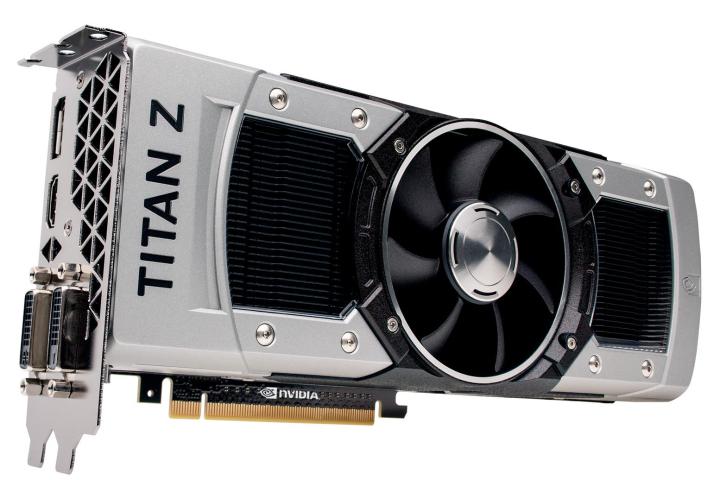
Nvidia’s $3,000 GeForce GTX Titan Z graphics card has been delayed again, according to VR-Zone, and a competing card from AMD may be forcing Nvidia to rethink releasing it at all.
Nvidia first revealed the Titan Z back in late March. After getting an initial release date of April 29, which then slipped to May 8, the card failed to get a mention in Nvidia’s earnings call last week, and still hasn’t hit store shelves. Recent moves from AMD may explain Nvidia’s wavering.
Since the Titan Z was first announced, AMD has released its own dual-GPU monster. The company’s Radeon R9 295X2 graphics card, which we got to review for ourselves, essentially takes the same approach that Nvidia has with the Titan Z. AMD more or less slapped a pair of Radeon R9 290X cards together onto a single board, and included built-in liquid cooling to prevent it from melting.
Despite the similar approach, there’s one key difference: The AMD Radeon R9 295X2 costs $1,500. Considering that the 295X2 would likely offer similar performance for half the price, Nvidia might have pulled back the Titan Z knowing that there’s little chance that it could compete.
Should it ever see the light of day, the Nvidia GeForce GTX Titan Z will be powered by a pair of GK110 GPUs; which is the same one that powers the Nvidia GeForce GTX Titan Black. On top of that, it’ll also feature 12GB of GDDR5 RAM.
So when might Nvidia make a Titan Z announcement? Computex, which will be held early next month, might be the spot. The GPU maker is set to be in attendance, so stay tuned.



